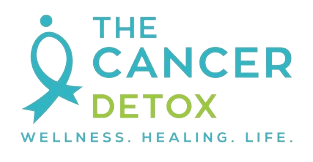Breast Cancer Prevention Diet: THE Science-Based Guide You Need
If you are a breast cancer survivor or have a family history, here is a breast cancer prevention diet that is the science-based guide you need!…
A Breast Cancer Prevention Diet: THE Science-Based Guide You Need

ARTICLE SUMMARY
- A breast cancer prevention diet should consist of at least 1 – 2 servings a day of cruciferous vegetables
- As seen in the Shanghai study, raw cruciferous vegetables might be beneficial to your breast cancer-fighting diet.
- African-American women may benefit from increasing the number of cruciferous vegetables they eat to reduce the risk of aggressive triple-negative breast cancer
- Watch our latest Youtube video about the breast cancer prevention diet
BUT FIRST…WHAT CAUSES BREAST CANCER?
It is estimated that there were 2.1 million newly diagnosed breast cancer cases globally in 2018 [1]. In North America, it is the second leading cause of death, preceded only by lung cancer [1]. Genetics plays a role in only 5 – 10% of breast cancer cases (e.g. most often due to mutations in the genes BRCA1 and BRCA2) [1].
If only 5 – 10% of breast cancers are caused by “bad genes,” then what are the other causes of breast cancer? To answer that question you need to look at the environment. What chemicals are women exposed to? How do their hormone levels impact breast cancer growth? What foods are women eating that might drive breast cancer growth?
Here are the environmental risk factors that may increase the risk of breast cancer:
- Menstruation: typically an early age of menarche or late age of menopause can increase your risk because of increased lifetime estrogen exposure
- Reproduction: less children or no children at all may increase your risk due to increased lifetime estrogen exposure
- “Environmental” Hormone Exposure: birth control and hormone replacement therapy add “extra” hormones to a woman’s system which could drive breast cancer growth
- Nutrition: alcohol and high amounts of processed and red meat can increase your risk
- Weight: weight gain and body fat distribution also play a role
WHY YOU SHOULD CARE ABOUT BREAST CANCER PREVENTION
With 1 in 4 women getting breast cancer in the U.S., all women should be focused on breast cancer prevention [1]. Besides the fact that having breast cancer really does suck in terms of the blow it has to your peace of mind and mental state, the side effects of breast cancer treatment are no fun. While many women have decided to surgically remove their breasts all together to get rid of “the problem,” the side effects of mastectomy are huge. Mastectomy side effects include lack of movement of your upper body, which can last for months. As well, breast reconstruction surgery may be needed after the initial surgery to remove the breasts. Mastectomy will lower your quality of life.
If you are in need of chemotherapy then get ready for a different level of side effects. Chemotherapy drugs affect your digestion, skin, hair, and the functioning of your limbs. Many women have to deal with these side effects for months, possibly years.
And finally, breast cancer is expensive. So let’s see how we can avoid it with a breast cancer prevention diet.
22 VEGETABLES FOR YOUR BREAST CANCER PREVENTION DIET
It took a while to get a consensus on the full list of cruciferous vegetables. You can find these vegetables at most grocery store and “farmer’s markets” chains nationwide. These vegetables are the foundation of a breast cancer prevention diet:
- Broccoli
- Broccoli sprouts
- Cabbage
- Brussel sprouts
- Cauliflower
- Daikon (Japanese radish)
- Daikon sprouts
- Garden cress
- Kale
- Rapeseed
- Wasabi
- White mustard
- Yellow mustard
- Bok choy
- Arugula (rocket salad)
- Collard greens
- Horseradish
- Kohlrabi
- Radish
- Rutabaga/turnip
- Watercress
- Mustard greens
CANCER-FIGHTING FOODS: CRUCIFEROUS VEGETABLES
The foundation of a breast cancer prevention diet should consist of cruciferous vegetables. The good news is that every vegetable in the list above is a cruciferous vegetable.
These vegetables are known as the cabbage- or mustard-family group of vegetables. They include well-known vegetables such as broccoli, cabbage, and kale. They are a healthy food choice and are inexpensive cancer-fighting foods. Here are some reasons to start adding these foods to your diet:
- Can be stored for a long time in their raw state, so stock up and add to your smoothies, soups, and stews
- They have minimal side effects (e.g. the exception is that in some people it can negatively effect the thyroid gland)
- They contain a natural, cancer-fighting chemical known as glucosinolates. This gives some of the vegetables in this group a spicy kick (e.g. watercress)
- They also contain another cancer-fighting chemical called sulfur, which is also found in the anticancer spices garlic and onions
BREAST CANCER PREVENTION DIET: SCIENCE-BASED FACTS
The reason why cruciferous vegetables should be the foundation of a breast cancer prevention diet is that the science backs it up! These vegetables have been shown to reduce the risk of breast cancer in pre-menopausal women, post-menopausal women, and all ethnicities of women including African-American and Asian women.
Cruciferous Vegetables Lowers Risk of Breast Cancer by 43% In Black Women

In a recent study, a diet high in cruciferous vegetables was shown to lower the risk of aggressive breast cancer, also known as triple-negative breast cancer, in Black women. A total of 59,000 African-American women were asked about their general health and food intake every two years beginning in 1995.
Women in this study who had vegetables as the foundation of their breast cancer prevention diet had lower rates of this disease:
- Women who ate 2 or more servings of vegetables every day lowered their risk of aggressive triple-negative breast cancer by 43%
- Women who ate just 1 serving of vegetables a day lowered risk by 21%
- The specific vegetables that had the most impact on lowering breast cancer risk were:
- Women who ate collard greens 3 or more times a week reduced their risk of breast cancer by 19%
- Women who ate broccoli 3 or more times a week reduced their risk of breast cancer by 13%
- Green and red cabbage reduced the risk of breast cancer by 13% in pre-menopausal women
- Post-menopausal women who age green and red cabbage reduced their risk by 20%
- And honorable mention goes to spinach, which is not a cruciferous vegetable, however eating it frequently reduced risk of breast cancer by 22% [2]
Cruciferous Vegetables Lowers Risk of Breast Cancer by 35% In Asian Women
The Shanghai Breast Cancer Study was conducted in a population of Chinese women. The researchers found that turnips and Chinese cabbage were the foundation of a breast cancer diet for the women in this study. The women tended to eat these foods in their raw, uncooked state [3].
Here are some other interesting facts from this study:
- Turnips significantly lowered the risk of breast cancer by 19% for pre-menopausal women
- Chinese cabbage, or Napa cabbage, reduced the risk of breast cancer by 24%
- Post-menopausal women had a 35% lower risk of developing this disease by eating these types of cruciferous vegetables
HOW DO THESE VEGETABLES FIGHT CANCER?
There are literally thousands of research studies on the health benefits of cruciferous vegetables for the prevention of diabetes, heart disease, Alzheimer’s, and cancer. They work so well because researchers have found they have a direct effect on your DNA.
“Cruciferous vegetables turn off cancer promoting genes, such as HDACs or histone deacetylases, which promote cancer cell growth.”
The chemicals found in cruciferous vegetables are what does this. Glucosinolates are a natural chemical found in these vegetables known to promote general health. When you chew these vegetables, glucosinolate gets converted to sulforaphane and indole-3-carbinol. These cancer-fighting chemicals are often formulated into health supplements that you can find at your local nutrition store.
So the chemicals found in these vegetables have a variety of effects on the body, all of which act to prevent cancer:
- Increases the detoxification of cancer-causing chemicals often found in the environment
- Increases the destruction of growing cancer cells
- Lowers the incidence of sickle cell anemia and hypertension, diseases prevalent in African-American and Hispanic communities, by eating high amounts of yams and cassava
- Inhibits the growth of cancer cells (known as “proliferation”)
- Inhibits the growth of new blood vessels that feed a growing cancer tumor (known as “angiogenesis”)
- Stops the spread of cancer, known as metastasis
- Decreases the amount of “bad” estrogen in the body, which is known to increase breast cancer risk (e.g. 16-alpha hydroxyestrone)
- Increases antioxidants in the body to reduce oxidative stress, which has been implicated in cancer growth
MORE RESOURCES
- Everything you need to know on DCIS breast cancer treatment and survival rates
- Vitamin D and cancer risk. Why you should check your Vitamin D levels as soon as you are diagnosed with breast cancer. This may help to increase your survival outcomes!
- Get a sneak-peek into The Cancer Detox program on natural cancer killers here
Do you have some favorite recipes that include these vegetables? If so include some in the comments below
REFERENCES
- Bray F, et al. Global cancer statistics 2018: GLOBOCAN estimates of incidence and mortality worldwide for 36 cancers in 185 countries. CA Cancer J Clin. 2018;68:394-424.
- Boggs DA, et al. Fruit and vegetable intake in relation to breast cancer in the Black Women’s Health study. Am J Epidemiol. 2010;172:1268-1279
- Lee SA, et al. Cruciferous vegetables, the GSTP1 Ile105Val genetic polymorphism, and breast cancer risk. Am J Clin Nutrition. 2008;87:753-760
To Your Best Health!
Dee Grace, PhD

Hi! I am Dee Grace, PhD and I am a scientist and Health Coach for cancer patients, and I hope you enjoyed our article on a breast cancer-fighting diet. Our company, The Cancer Detox, helps cancer patients improve their survival outcomes by getting better care from their doctor and implementing a cancer-fighting diet. Wellness, healing, and better quality of life start here!


